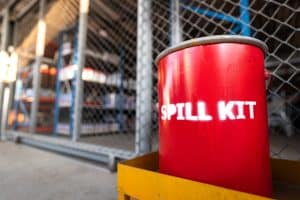SPCC Plan Development
Accurate Facility Diagram
Include all tanks, drums, loading areas, and transfer stations.
Show drainage patterns and secondary containment systems.

Oil Storage Inventory
Document type, quantity, and location of all oil containers >55 gallons.
Include both aboveground and underground storage (with certain exceptions).
Secondary Containment
Use dikes, berms, double-walled tanks, or spill pallets.
Ensure containment capacity is 110% of the largest container or as required.
Spill Pathway Evaluation
Assess potential spill routes to navigable waters.
Include stormwater systems, drainage ditches, etc.
Inspection & Maintenance
Regular Inspections
Perform visual inspections weekly or monthly (as specified).
Look for leaks, corrosion, and structural integrity issues.
Tank Integrity Testing
Follow industry standards (e.g., STI SP001, API 653).
Frequency depends on tank size, construction, and containment features.
Containment Maintenance

Remove rainwater promptly from diked areas.
Test water before discharge to ensure it’s oil-free.
Training & Personnel
Employee Training
Conduct annual SPCC training for all relevant personnel.
Include spill response, inspection procedures, and reporting.
Designated SPCC Coordinator
Assign a primary person responsible for implementation and oversight.
Provide 24/7 contact information.
Documentation & Recordkeeping
Keep Records for 3 Years
Inspection logs, training records, discharge reports, and plan revisions.
SPCC Plan Certification
Must be certified by a Professional Engineer (PE), unless eligible for self-certification.
Five-Year Review
Review and update the plan at least once every five years or after significant changes.
Emergency Response
Spill Response Plan
Include procedures for containment, cleanup, and notification.
Stock adequate spill response equipment on site.
Emergency Contacts
List internal and external contacts (e.g., NRC, local fire department).
Discharge Notification
Any discharge into navigable waters must be reported to the National Response Center (NRC) immediately: 1-800-424-8802
Common Pitfalls to Avoid
Incomplete diagrams or missing containers.
Lack of secondary containment for transfer areas.
Not updating the plan after facility changes.
Infrequent or undocumented inspections.

